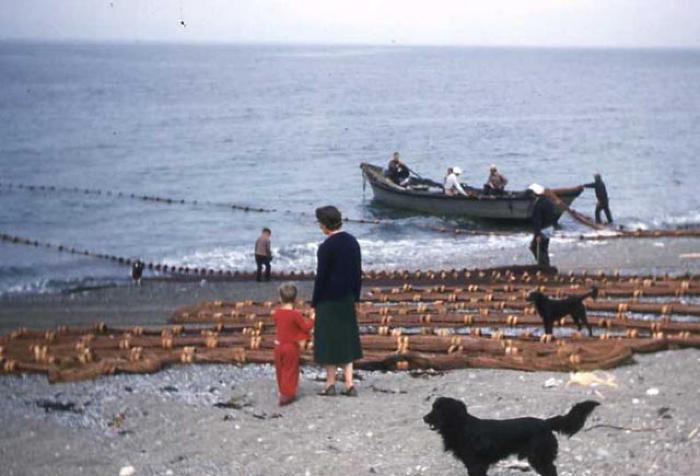Dog — Aikuq (N), Sapakaq (N), Piugta (S)

Archaeological sites in Alaska illustrate that dogs (Canis familiaris) have been a part of Native communities for at least two thousand years, although the presence of dogs in Siberia eleven thousand years ago suggests that it may be much longer. On Kodiak, dog bones illustrate that Alutiiq people kept two varieties of dogs: a large, wolf-like breed similar in size to the working dogs used by northern Alaskans and a smaller, lighter dog. These animals probably guarded communities against bears and acted as companions, but apparently, they were not used for transportation, for carrying loads or pulling sleds.
A legend collected in the early nineteenth century tells of the colonization of Kodiak Island by the children of a woman and her lover, a dog. The daughter of a chief, who lived on the Alaska Peninsula, was banished by her father after having five children with her lover. The lover tried to find his family but was drowned in the search. When the children grew up and learned of their grandfather’s harsh treatment, they tore him to pieces and fled to distant areas. Some of the children went north, while others came to Kodiak and started their own families, creating the island’s population.
There are many ways to interpret this dog-husband story. It may be about banishment. Elders say that long ago, incestuous people were called dogs and were sometimes forced to leave a community. It may also be a story that an unfriendly neighbor told to explorers to make fun of Kodiak Islanders. People from different areas often traded insults. Or maybe this is a story about a sua, the human spirit that lives in all things. This spirit looks like a person. It can leave its owner’s body at any time and live on its own. Whatever the answer, this story illustrates the deep ancestral ties between the Alutiiq and their coastal neighbors. Similar dog-husband stories are found across the Eskimo-Aleut world.
